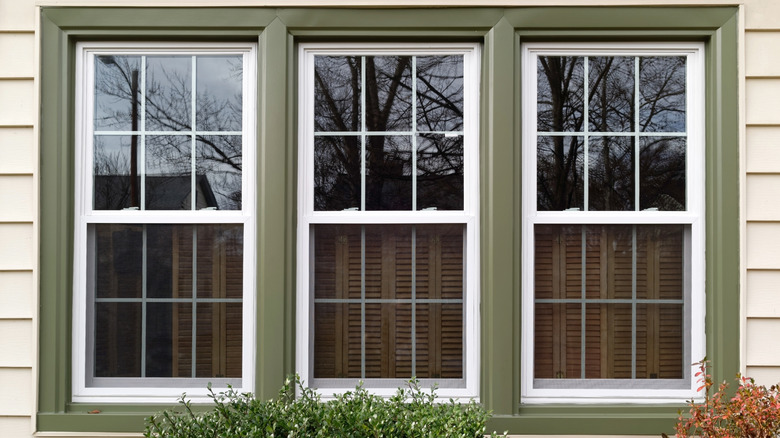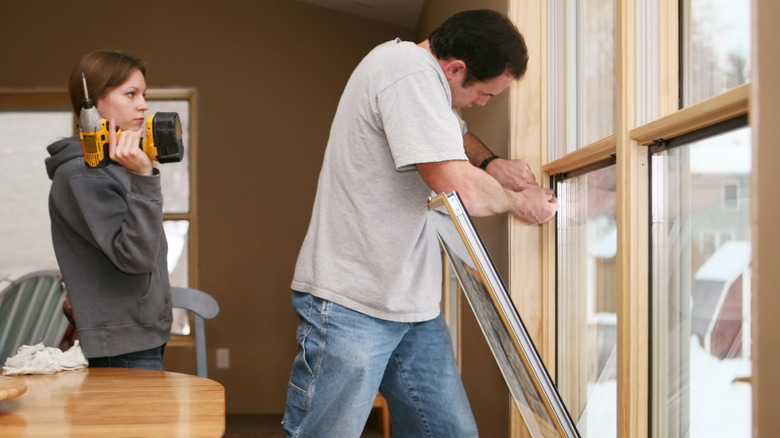2025's Biggest Window Treatment Trend Is A Better Investment For Your Future
Climate change is causing a surge in weather-related disasters, making them both more frequent and more powerful. Wildfires, drought, and flooding are just some of the phenomena causing billions of dollars in damage to homes across the country. At the same time, insurance companies are raising premiums and lowering coverage, making the climate threat even more worrisome. That's why building resilient (or hardened) homes has become one of the biggest — and most impactful — design trends of 2025.
Making a house resilient means using durable materials that are capable of withstanding extreme weather and easier to repair if the property is impacted by a disaster. A good place to start is with renovating your windows so they'll stay intact when faced with the harshest of elements. If you live in an area prone to wildfires, opt for dual-pane windows made of tempered glass, which is four times less likely to crack or break when exposed to high temperatures. Also consider adding window screens, as these will reduce how much heat the glass is exposed to while stopping big embers from entering the home.
If, on the other hand, your region is more prone to hurricanes and storms, choose impact-resistant windows, which are specifically built to withstand being hit by flying debris. Adding a window film or laminate can further reinforce the glass while well-maintained seals and frames will keep the rain from seeping in.
The importance of making your home resilient
While the upfront cost to replace a window can reach into the upper hundreds, consider it an investment for your future. Not only will making your home more resilient help reduce the risk of damage and costly repairs, but it will also have day-to-day benefits. Installing hardened windows, for example, helps with climate control, which will make your home more energy efficient and thereby reduce utility bills.
However, it's not just specialty windows that can make a home more resilient. In 2023, the U.S. Department of Housing and Urban Development published an entire series of guides called "Designing for Natural Hazards," which offers resilience tips for everything from storms to volcanoes. Some of the key takeaways include building homes to be more fireproof by installing ember-resistant vents, swapping out flammable siding, and replacing shingles with a roof made of metal, clay, or tile.
Meanwhile, adding flood-resistant insulation can make all the difference in areas prone to strong storms. And while some may not consider drought to be as serious an issue, protecting your home during a heat wave is imperative. Persistent dry conditions can wreak havoc on a foundation, causing cracks, shifting sewer lines, and more. Installing a system to "water" the foundation and keep the ground moist can keep such potential hazards at bay.

